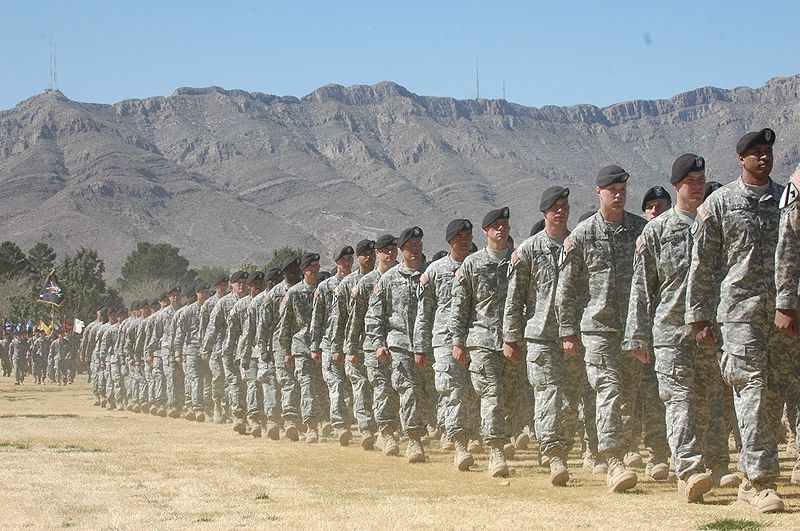Charlie Moskos, the nation’s most pre-eminent military sociologist and the architect of “Don’t Ask, Don’t Tell,” is dead. So is Les Aspin, who as a defensive defense secretary battling the Joint Chiefs of Staff, made “Don’t Ask, Don’t Tell” official Pentagon policy in 1994. Friday, “Don’t Ask, Don’t Tell” will join those two men – who played such a major role in one of the most divisive military issues of the past generation – as a part of the past.
Defense Secretary Leon Panetta – hours after he takes his oath of office publicly (he was sworn in privately three weeks ago) – will certify to President Obama that letting openly gay men and women serve in uniform will not hurt military readiness, Pentagon officials said late Thursday. Once Obama endorses the certification by Panetta and Admiral Mike Mullen, the chairman of the Joint Chiefs of Staff – which could also happen Friday — a two-month countdown begins. If the President concurs Friday, in 60 days – on Thursday, September 22, according to one person involved — “Don’t Ask, Don’t Tell” will be history.
There is a mild unease running through military circles about the end of the ban, but troops believe any snags due to the change will be manageable. Most gays in uniform are unlikely to reveal their sexual orientation even after September 20, their advocates say. They simply want the prospect of expulsion for their sexual orientation to end.
Ending the ban generated opposition to some quarters in Congress, and from some military leaders who feared it would become a battlefield distraction. But as the process moved forward over the past two years, it became clear that for most younger troops, homosexuality was not the overwhelming issue it had been for their parents, or even their older siblings.
“`Don’t Ask, Don’t Tell’ was an ineffective policy that prevented talented, highly-skilled soldiers from honorably serving our nation,” said Senator Jack Reed, D-R.I., a former Army Ranger. “I am pleased our civilian and uniformed military leadership is finally eliminating this barrier to service.”
“The troops and their commanders are ready,” added Aubrey Sarvis, an Army vet and executive director of the Servicemembers Legal Defense Network, which has lobbied for an end to the ban. “Our nation’s top military leaders have testified that commanders see no significant challenges ahead.”
The Army’s No. 2 officer agrees. “We have certain areas where there was maybe a higher amount of angst than others,” General Peter Chiarelli said in May. “Probably some senior non-commissioned officers and officers…[and] the combat arms.” The vice chief isn’t predicting perfection: “This is not going to happen without incident — I’d be crazy to say that,” he allowed. “Somewhere along the line something is going to occur.” But the training, he stressed, should keep it in check.
Not everyone thinks so. Elaine Donnelly of the Center for Military Readiness, a steadfast opponent of the change, predicted trouble down the road. “On the day that President Obama signs a paper ‘certifying’ that no harm will come to the military when repeal is implemented,” she said, “he will own the San Francisco Military that he has created.”
The certification comes after five months of training military trainers to train troops about how to deal with gays serving openly in their midst. It fulfills an Obama campaign promise to end the ban by pushing its repeal through Congress late last year, followed by the Pentagon training ending in Friday’s certification. “This training explains the new policies and provides information about specific behaviors, statements and actions to our Airmen, ensuring a consistent understanding grounded in an organizational climate of dignity and respect,” Air Force Colonel Jeff White said when training began.
The Army’s “Top 10 Things You Need To Know About The Repeal Of DADT” makes clear, among other things:
— Upon repeal, we will no longer separate Soldiers solely on the basis of legal homosexual acts, a statement that a Soldier is homosexual or bisexual, or marriage to a person of the same sex. Statements about sexual orientation or lawful acts of homosexual conduct will not be a bar to military service or admission to any accession program. Sexual orientation will continue to be a personal and private matter.
— Commanders may not establish practices that physically segregate Soldiers according to sexual orientation.
— There will be no changes regarding any Soldier’s free exercise of religious beliefs, nor are there any changes to policies concerning the Chaplain Corps and its duties. The Chaplain Corps’ First Amendment freedoms and its duty to care for all will not change. Soldiers will continue to respect and serve with others who may hold different views and beliefs.
— There will be no changes to eligibility standards for military benefits and services. A same-sex partner should be treated the same as an unrelated third party (e.g. girlfriend, boyfriend). All Soldiers will continue to have various benefits for which they may designate any beneficiary regardless of relationship.
— Sexual orientation will not be placed alongside race, color, religion, sex and national origin as a class under the Military Equal Opportunity (MEO) Program and therefore will not be dealt with through the MEO complaint process…Harassment or abuse of any kind, including that based on sexual orientation, is unacceptable and will be dealt with through command or inspector general channels.
— There will be no new policy to allow for release from service commitments for Soldiers opposed to repeal of DADT or to serving with gay or lesbian Soldiers.
One more thing that didn’t make the Army’s list: the 14,000 gay troops ousted over the past 17 years will be permitted to reapply to rejoin the military that kicked them out.



